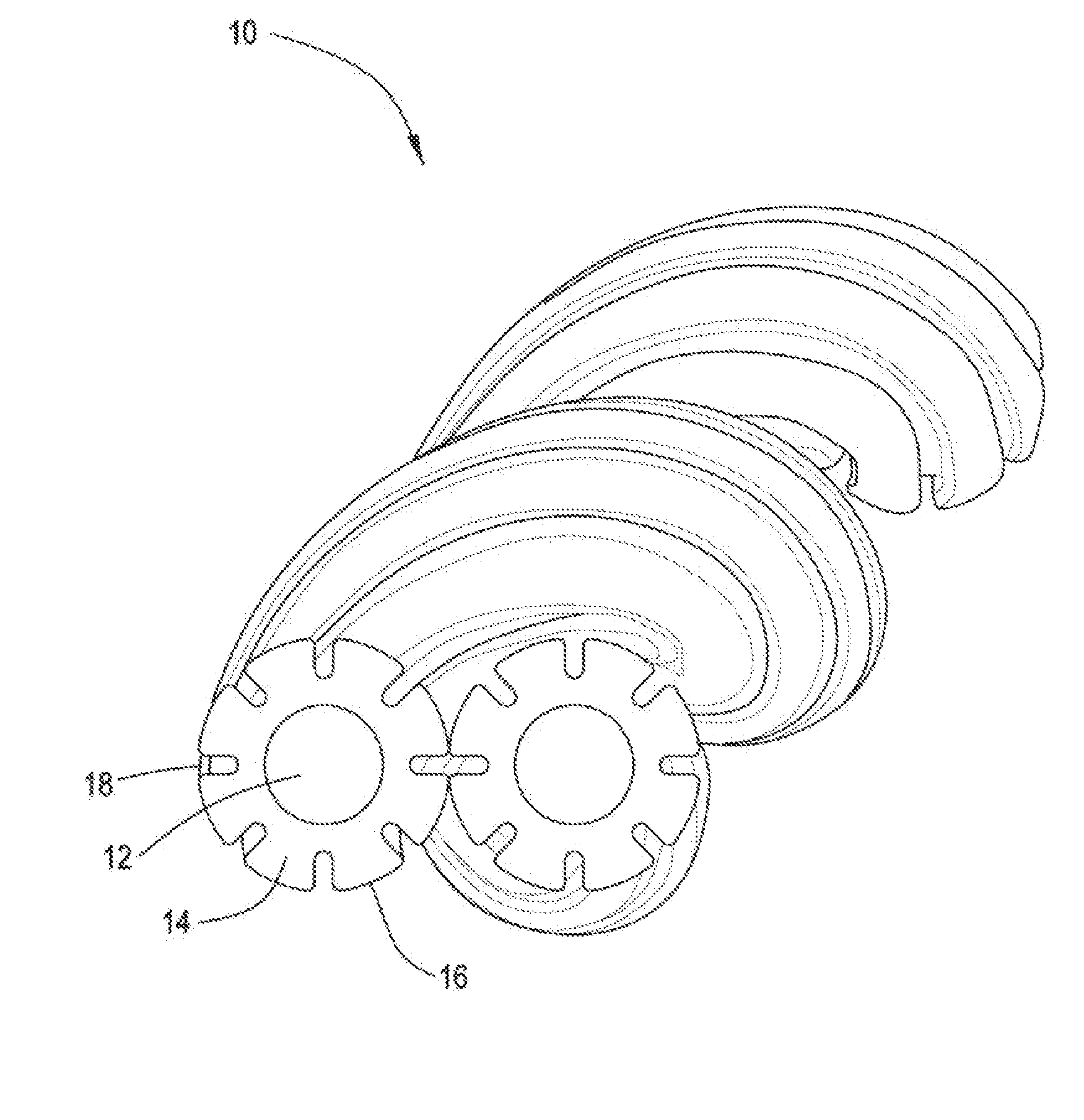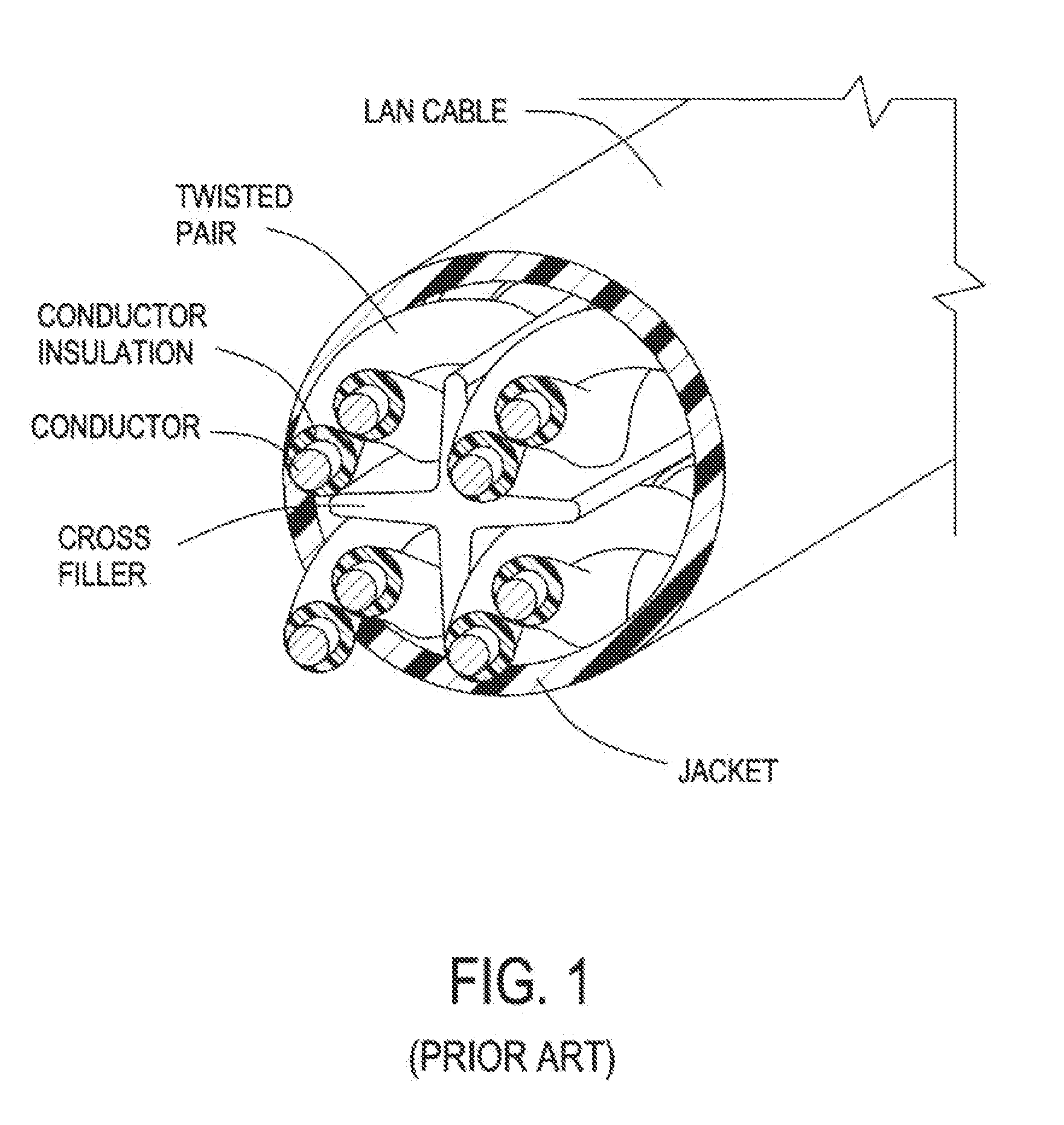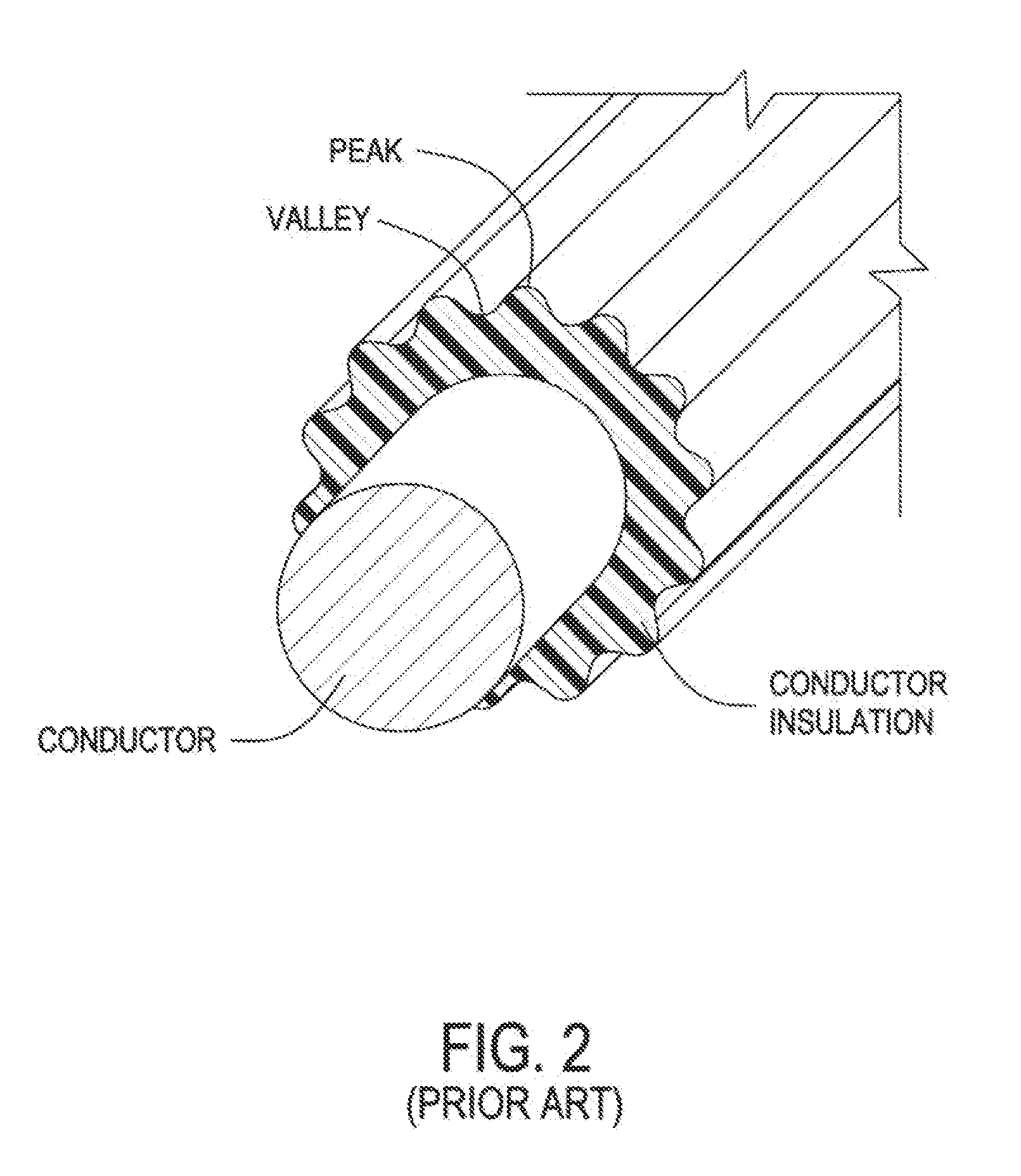Forward twisted profiled insulation for LAN cables
a profiled insulation and forward twisted technology, applied in the direction of insulating conductors/cables, cables, insulated conductors, etc., can solve the problems of dielectric materials having a negative impact on the electrical signal, contributing to signal loss, and other undesirable electrical phenomena, so as to maximize the distance between the conductors, minimize the amount of insulation used, and the effect of constant and stable design
- Summary
- Abstract
- Description
- Claims
- Application Information
AI Technical Summary
Benefits of technology
Problems solved by technology
Method used
Image
Examples
Embodiment Construction
[0028]Applicants begin by providing a basic structure for a twisted pair 10 according to the present arrangement as shown in FIG. 5. Pair 10 has two conductors 12, each of which is surround by a profiled insulation 14, having successive peaks 16 and valleys 18. Such pairs are described throughout in the context of LAN type network communication cables, such as that shown in FIG. 1, however, the invention is not limited in that respect. The presently described pairs 10 may be used in any twisted pair arrangement, such as those found in large count network cables, telephone cables etc. . . . It is noted that FIG. 5 is solely to show the constituent parts of pair 10 and insulated conductors 12 / 14 irrespective of any forward twisting, which are discussed in more detail below.
[0029]The polymer used in profiled insulation 14 may be selected from fluorinated polymers such as (FEP) Fluorinated Ethylene Propylene, (PFA) Perfluoroalkoxy, (ETFE) Ethylene Tetrafluoroethylene, (PTFE) Polytetrafl...
PUM
 Login to View More
Login to View More Abstract
Description
Claims
Application Information
 Login to View More
Login to View More - R&D
- Intellectual Property
- Life Sciences
- Materials
- Tech Scout
- Unparalleled Data Quality
- Higher Quality Content
- 60% Fewer Hallucinations
Browse by: Latest US Patents, China's latest patents, Technical Efficacy Thesaurus, Application Domain, Technology Topic, Popular Technical Reports.
© 2025 PatSnap. All rights reserved.Legal|Privacy policy|Modern Slavery Act Transparency Statement|Sitemap|About US| Contact US: help@patsnap.com



